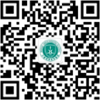Medical Services

Rehabilitation Medicine Dept.
Brief introduction
Rehabilitation Medicine is an emerging discipline that deals with the prevention, diagnosis, assessment and treatment of disabilities. It is a branch of medicine that aims to alleviate physical dysfunction, restore optimal abilities of physiology, psychology, vocation and social participation, thus empower clients to be competent and confident in daily activities, and thereby to improve the quality of life and prompting the reintegration to society. Large numbers of clinical practice has proved that the prognosis of clients improved significantly with early rehabilitation.
The Department of Rehabilitation Medicine provides services to clients in the following areas: neurological rehabilitation, orthopaedic rehabilitation and visceral disease rehabilitation. The staff of rehabilitation department consist of the first-session rehabilitation physicians trained by World Health Organization, professional therapists and outstanding rehabilitation nursing team. Professor WANG gang, the department director, is the first group of doctors specialized in rehabilitation medicine.
1. Physiotherapy
Physiotherapy (PT) is a physical medicine and rehabilitation specialty that remediates impairments and promotes mobility, function, and quality of life through examination, diagnosis, prognosis, and physical intervention (therapy using mechanical force and movements). PT management commonly includes prescription of or assistance with specific exercises, manual therapy and manipulation, mechanical devices such as traction, education, physical agents which includes heat, cold, electricity, sound waves, radiation, rays, prescription of assistive devices, prostheses, orthoses and other interventions. Staff in the department have many specialties including sports, neurology (Bobath, PNF), wound care, cardiopulmonary, geriatrics, orthopaedic (Maitland's manipulation, intelligent impulse adjustment, etc.) and pediatrics. The department also brought in many advanced physiotherapy equipment. WIRA®-irradiator, the most advanced light therapy equipment, allows a much deeper penetration compared to conventional infrared therapy yet it is gentle to the skin. It is used in wound healing, skin diseases, oncological hyperthermia, pain therapy, poor peripheral circulation, and in the treatment of chronic inflammation and musculoskeletal pain. Enraf-NoniusMyomed 632 electrotherapy equipment can be applied in electronic diagnosis to assess the function of nerve and muscle and is used in cervical and lumbar diseases, soft tissue injury, subluxation, muscular spasm, disuse amyotrophy, nervous pain, arthritis, postoperative uroschesis and uroclepsia. Bone trauma therapeutic instrument could promote healing of bone fracture and relieve swelling and pain of clients.
2. Occupational therapy
Occupational therapy (OT) is the use of assessment and treatment to develop, recover, or maintain the daily living and work skills of people with a physical, mental, or cognitive disorder. Occupational therapists also focus much of their work on identifying and eliminating environmental barriers in daily activities. Occupational therapy is a client-centered practice that places emphasis on the progress towards the client's goals. Occupational therapy interventions focus on adapting the environment, modifying the task, teaching the skill, and educating the client/family in order to increase participation and performance of daily activities, particularly those that are meaningful to the client. It contributes to enhancing both physical and psychological functions, facilitating independent living, improving quality of life, and promoting reintegration into home, work and society. The department brought in E-link training system which improves the upper limb function and activities of daily living through virtual reality.
3. Speech therapy
Speech therapy (ST) is to prevent, assess, diagnose, and treat speech, language, social communication, cognitive-communication, and swallowing disorders in children and adults. Speech services begin with initial screening for communication and swallowing disorders and continue with assessment and diagnosis, consultation for the provision of advice regarding management, intervention and treatment, and other follow up services for these disorders. Services are provided in the following areas: aphasia and dysarthria caused by neurological injuries, language retardation and inarticulacy in children, and dysphagia. At recent years, the department collaborates with key laboratory of speech and auditory science in East China Normal University and conducts new technology research and innovation. It also brought in training appliance for Language and Brain which improves speech and cognitive function of the clients.
4. Rehabilitation engineering
Rehabilitation engineering is the systematic application of engineering sciences to design, develop, adapt, test, evaluate, apply, and distribute technological solutions to problems confronted by individuals with disabilities. Functional areas addressed through rehabilitation engineering may include mobility, communications, hearing, vision, and cognition, and activities associated with employment, independent living, education, and integration into the community. The department developed ICB foot orthosis which is an international advanced technology to treat biomechanical instability. Since started, it has got outstanding effects on diseases related to biomechanical instability, such as leg length discrepancy, hallux valgus, plantar fasciitis, and chronic low back pain, etc.
5. Early-stage rehabilitation
The department is closely collaborating with other clinical department (ICU, orthopaedic department, hand surgery, etc.) and conducts bedside rehabilitation to prevent contracture and deformity.
6. Rehabilitation nursing
Rehabilitation Nurses help patients suffering from disabling injuries or illnesses live relatively normal and independent lives by conducting professional nursing skills and collaborating with multidisciplinary rehabilitation team. It is characterized by promoting clients changing from passive care to self-care under supervision. Rehabilitation nursing is also the extension of rehabilitation therapy which includes proper positioning, complication prevention, psychological support to clients, assistance in self-care, etc.




